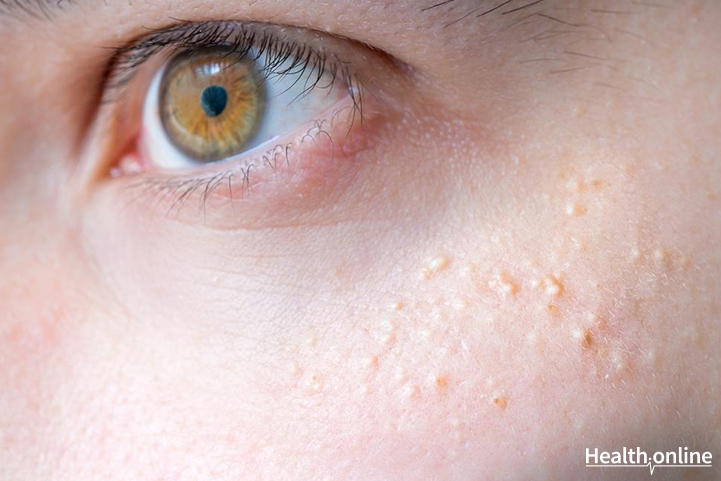
All You Need to Know About Milia
Have you noticed tiny bumps on your face, on your cheekbones, or above your eyes? You likely thought they were harmless whiteheads that did not feel pain. Didn’t you wonder why they didn’t appear with an inflammation and did not disappear no matter what you did to cleanse them ? That is because those tiny bumps aren’t whiteheads, they were Milia.
Recommended Read: How to Get Glowing Skin Naturally
What is Milia?
Milia is nothing but milium cyst. They are small, white in color, appear bumpy, and occur mostly near the nose or on the cheeks. These small cysts are seen in groups and are often referred to as Milia. They usually happen when the keratin gets trapped between the skin surfaces. Dermatologist Dr. Lily Talakoub of Washington DC says, “Milia is a small block of a sweat gland in the skin. They fill with a protein called keratin and develop into small pinpoint cysts like white bumps under the upper layer of the skin—the stratum corneum.”
Keratin, is a protein found in the hair, the nails and the skin tissues. Milia can occur in all age groups and are most common in new-born babies. They are seen on the cheeks, face, and eyelids. They are temporary, and people confuse it with Epstein pearls -harmless white-yellow cysts on a newborn’s gums and mouth. In infants, milia usually clear in a few weeks, while in adults and children it may take a few months to disappear. The Stanford School of Medicine says, “babies with Milia are born with it, whereas baby acne doesn’t occur until a few weeks after birth.”
Recommended Read: How To Deal With Adult Acne
What causes Milia to occur on the skin?
Milia is most widespread among those who have oily skin or are prone to acne. Skin care creams that are oily and have silicone products or dimethicone in them can trigger milia. Moreover, not exfoliating regularly in the correct way can cause these small white bumps, as the product residue left behind can choke the glands.
In children and adults, Milia is associated with damage to the skin. Its causes include:
- Burns and damage to the skin.
- Blistering and injuries like poison ivy.
- Laser resurfacing and skin resurfacing procedures.
- Long-term use of steroid creams.
- Sun damage due to long-term exposure.
Types of Milia
These tiny dome-shaped bumps do not cause itching and pain. They may cause discomfort in some people, as they occur at odd places, such as under the eyes and on other parts of the face. The types of milia are categorized based on the age when they occur.
Neonatal Milia
Neonatal Milia is a condition usually observed in newborns, that heals in a few weeks. These cysts can appear on scalp , face, and torso. Around 40% of newborns suffer from milia.
Juvenile Milia
Genetic disorders like pachyonychia congenital, nevoid basal cell carcinoma, Bazex-Dupré-Christol syndrome and Gardner syndrome cause Juvenile Milia.
Primary Milia in Children and Adults
Keratin gets trapped beneath the surfaces of skin that results in the formation of cysts around the forehead, eyelids and even genitalia. This leads to a condition called Primary Milia. They are temporary and may disappear in few weeks or months.
Milia Treatment
There is no specific treatment required for milia, as they disappear with time. In a few cases, there are medications available for cysts that cause distress. They are:
- Deroofing or using a disinfected needle to remove the contents of the cyst.
- Topical retinoids -creams with vitamin A can are used for milia under eyes treatment .
- Chemical peels and laser ablation where the laser is used to remove the cyst.
- Diathermy where extreme heat is used to eliminate the cysts.
- Destruction curettage, which is clinical rubbing and cauterizing to destroy cysts.
- Cryotherapy involves freezing the cysts. It is one of the most common methods used to destroy the cyst.
It’s important to know whether the bump is a whitehead or Milia and what is the real cause of it to get it treated correctly. Visit a specialist to understand Milia better.
Keep yourself updated with the latest on Beauty . Like us on Facebook and follow us on Twitter for more on Health , Diet & Nutrition and Fitness . Also, check out our Health Tools and try out our health-related Quizzes .




